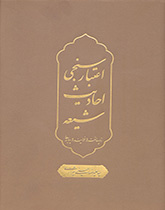
Validation of Shiite Hadiths (Infrastructure, Processes, Outcomes)
For a long time, the issue of the validity of hadith and its criteria has been one of the most important issues discussed by Imami scholars. Today, the prevalence of views that magnify the problems and harms of the field of hadith, making the general atmosphere of Shiite hadith invalid, has added to the importance of these issues.
Proponents of these views argue that the problems of Shiite hadith, especially the issue of forgery in hadiths by the Ghalyanah (exaggerators), have had such a significant and lasting effect on the Imami hadith heritage that the hadiths cannot be easily accepted, even if they are repetitive in terms of document.
The steadfastness of evaluating the authenticity of a hadith based only on the evaluation of the document, based on the confirmations and weaknesses contained in the writings of Rajali, is a well-known view, but based on historical research; it cannot be considered the view of the early Imami scholars. In order to get the method of validity of hadiths from the ancients, their books must be read in the frameworks considered by their authors, and the terms and interpretations used by them cannot be compared with the basis explained by the school of Hillah after them.
The present book is an attempt to present an organized system in response to issues in the field of authentication of Imami hadith. Some of the most important topics covered in the book are: Shiite biographical evaluation; Re-reading the key concepts of biographical evaluation, such as authentication, weakness and exaggeration and the factors and contexts of their emergence, Attention to the phenomenon of exception in the narrations of hadith books, Paying attention to the pivotal role of hadith writings and distinguishing between the subordinate and independent role of narrators.
The main message of this book is to recognize the basics and components of "symmetric-based" validation versus the current "narrator-based" validation basis.




